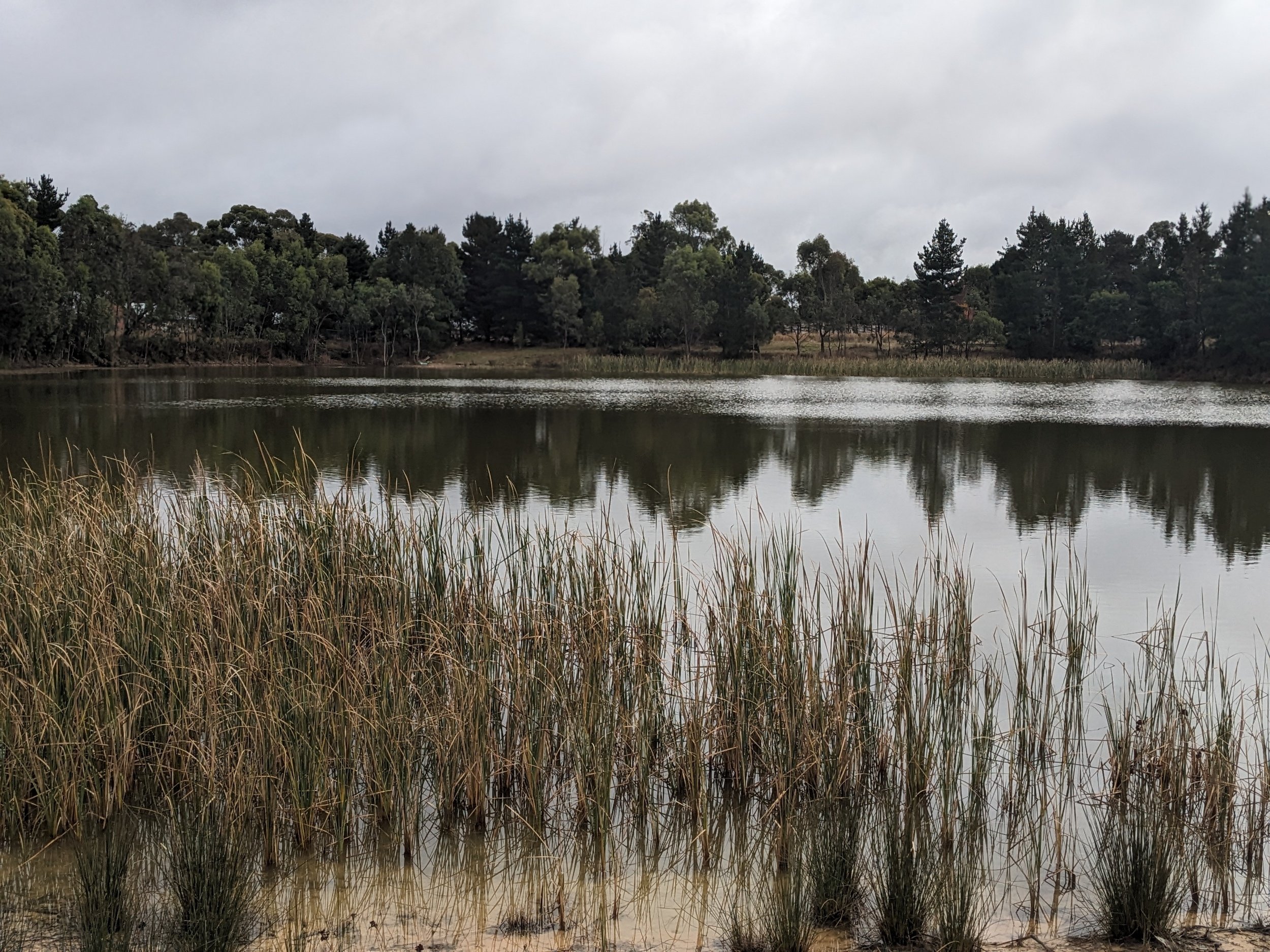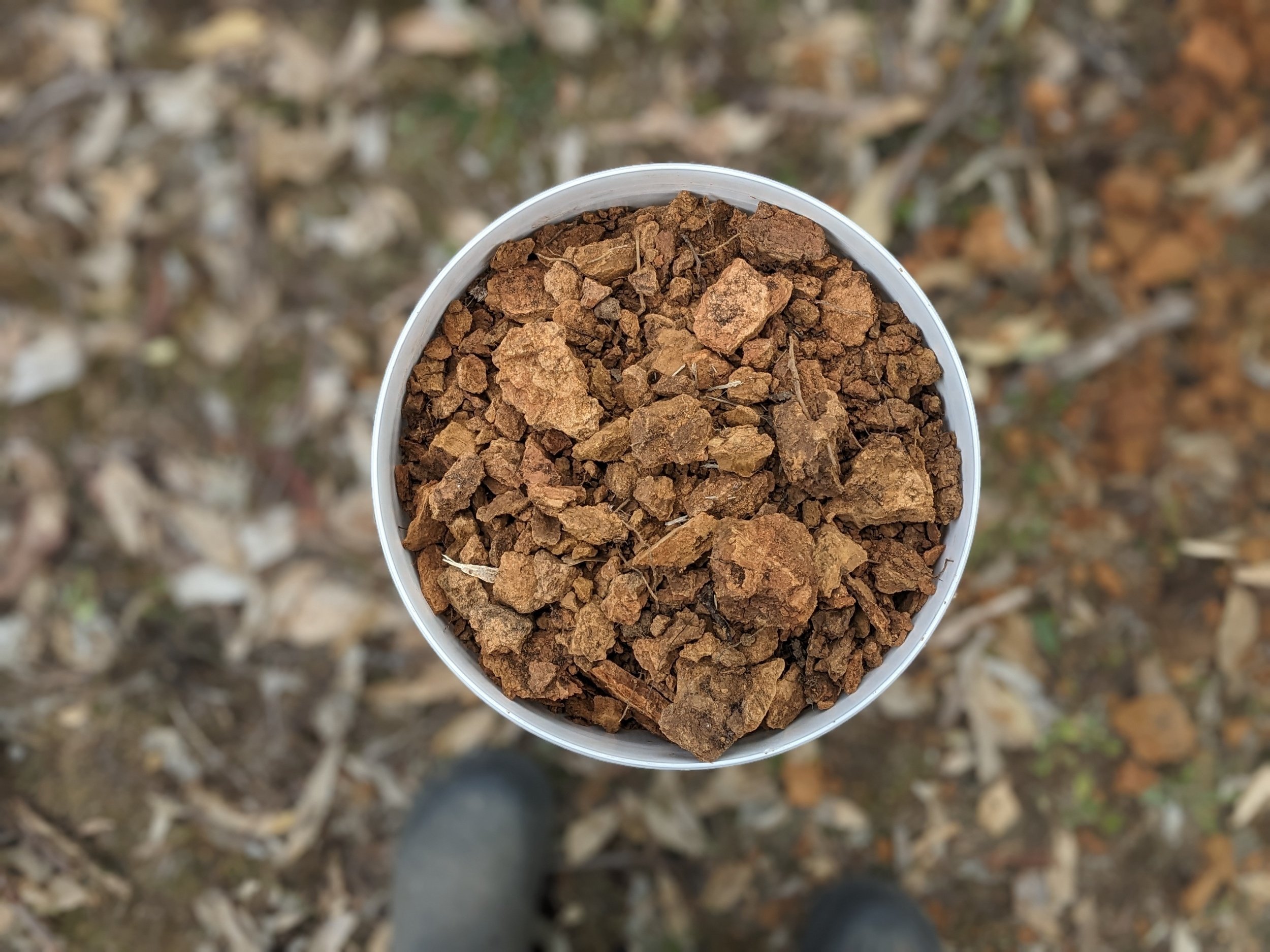Wild Clay Diaries
I’m deepening my relationship with my medium and home by foraging for wild clays local to Dja Dja Wurrung Country and surrounds. This is a mapping project helping me to process memories of place, appropriation and dispossession through the physical exploration of the land on which I reside.
This region holds a special place in my heart because I moved here from Melbourne eight years ago to build my first home and studio. The peaceful and stable space I have in regional Victoria helps me heal and focus on my art, a huge milestone personally and creatively. This might be part of what makes me curious about, in a literal way, the earth in my home town.
When I began to dig my own clay, something came to life inside me. I’ve been inspired by the work of South African ceramic artist Belinda Blignaut for many years and similarly, have a desire to create from a deeper sensory and emotional space. Wild clays speak of a unique and specific geological time and place. They carry with them impurities which lend unexpected variances and markings to a fired piece. They lack homogeneity and differ greatly in terms of colour, shrinkage, glaze fit, plasticity and temperature of maturation. Clay deposits are mixed with organic matter and need to be refined by a laborious process of slaking, sieving, drying, ageing and mineral supplementation in order to create a functional glaze or clay body. Every sample demands extensive exploration, field trips, experimentation, testing, retesting and testing again! Foraged, place specific materials are unpredictable and labour intensive but personalise the work and creative process in a significant way.
I’m excited about this journey, it’s autonomy, honesty, sustainability and the expressive possibilities it creates. So let me share my findings with you as I go along!
Golden Point
Three types of very plastic clay around a miraculous lake in the middle of Ballarat, a red midfire, kaolin and a beige stoneware. This property is now owned by Ballarat Gold Mine so not too sure I’ll be getting back in there anymore. Sad and disappointing!
The kaolin and red midfire, slaked, sieved, dried and ready to age. Look at those tones!
Nerrina
Took home a couple of samples from two sections of the bush on the edge of Nerrina, both dark brown terracotta. Beautiful, rich colour but bloats very badly at cone 11. I also threw some crushed shale samples in the kiln to see what they might look like as clay inclusions.
Enfield
I’ve taken samples from three different places in Enfield State Park, the roots of a fallen tree, a river bed and what I thought might be an old quarry.
The clay from the roots of a fallen tree is honey coloured, fires to bright red at cone 11 and remains completely porous. I’ve been using it to raise the firing temperature of some of the earthenware clays. Cracks easily and very kaolinitic. I’ve also made a nice dark brown slip from it just by throwing in some feldspar. The other two batches are lighter but with similar properties.
Creswick Clay Pit
The clay at the top of the hill is fine, light, off white and powdery. Further down there is green yellow earthenware as well as bright red and orange shale deposits. At the bottom of the hill there is a pit filled with with brown earthenware. All the clays have a silky feel, not much tooth, bloat at cone 11 and create beautiful little ripples in the forms as they shrink. The first few pieces I made bloated very badly but I found I can bring the clays to stoneware temperature by adding Pittong kaolin and Burrambeet sand.
A few little successes - 50 parts Creswick Clay Pit, 10 parts sand and 40 parts Pittong kaolin with a Pittong kaolin slip. I also discovered that you can make oil paints with crushed wild clay and linseed oil, check out the red brown painting I made with crushed red Creswick Clay Pit shale!
Lal Lal
The small sample I took was sand coloured clay and shale that fires to a light brown. Nice plasticity but bloats at stoneware.
Sandon State Park
Three clay samples from different parts of the bush, orange and dark red brown. Very strong body, sticky like bentonite and good plasticity. Some bloating at stoneware but not extreme so must be a mid fire.
Interesting results from a couple of peripheral wild clay, glaze tests. 70 parts Sandon clay with 30 parts whiting makes a dark green, glossy, celadon type glaze. 80 parts Sandon clay and 20 parts dolomite makes a tea dust with yellow pyroxene crystals. Reducing the flux and throwing in 20 parts Pittong kaolin creates mottled, matte green glazes. I’d prefer a tan or dark beige to green so I’ll experiment with adding some feldspar or spodumene which seem to yield red browns.
Clunes
Farm land and wide open spaces! In my garden there’s sticky, dense, black clay that fires to red brown and defies vitrification, Not far from me, down the hill and along a river, there is a similar clay which completely melts at stoneware, I’m assuming, because the fine clay particles which are washed downstream by the rain collect fluxes on their travels.
I’ve also found a red, kaolinitic clay near the dog park which fires to a dark, mahogany colour at cone 11 and remains porous. I’ll use this one to amend some of the dark earthenware and midfire clays without compromising their tonal depth.
Green Gully
Just out of Newstead on the road to Castlemaine! We drove into the bush and found dry waterways flanked by exposed dark orange clay. Rich pink brown at stoneware temperature and appears to be vitreous but judging from the appearance of the glazes, I would say it’d be a midfire. My matte glazes became glossy which tells me that the clay was starting to melt. Nice plasticity.
Pittong Kaolin
This place made me feel like I’d landed on the moon! Massive excavation sites and loading bays flanked with mountains of unrefined kaolin. I threw some in a bucket! And none of the truck drivers rumbling in and out told me to piss off and stop pinching stuff! Absolutely beautiful, arctic white kaolin which I’ve been using to get some of the earthenware clays up to stoneware. It can also be used as the basis for a white or cream glaze although I’d need to add a fair amount of flux.
Burrumbeet Sand
Orange sand from Lake Burrumbeet to help with bloating and glaze fit. It contains volcanic matter which gives the work a light speckle.
















































